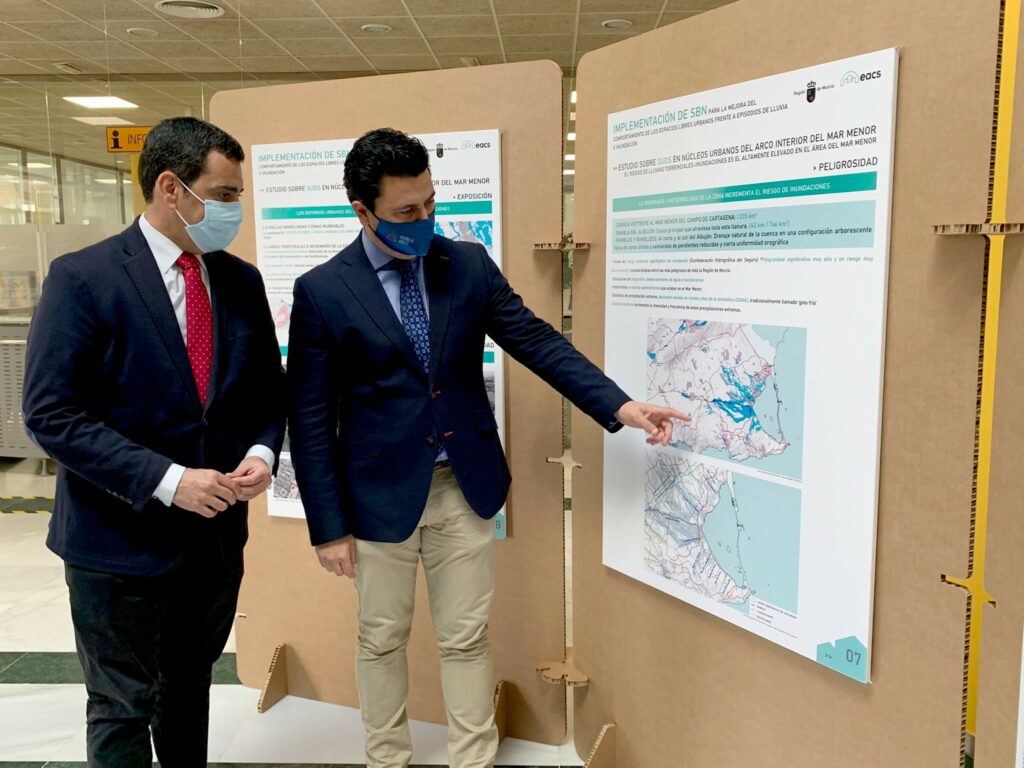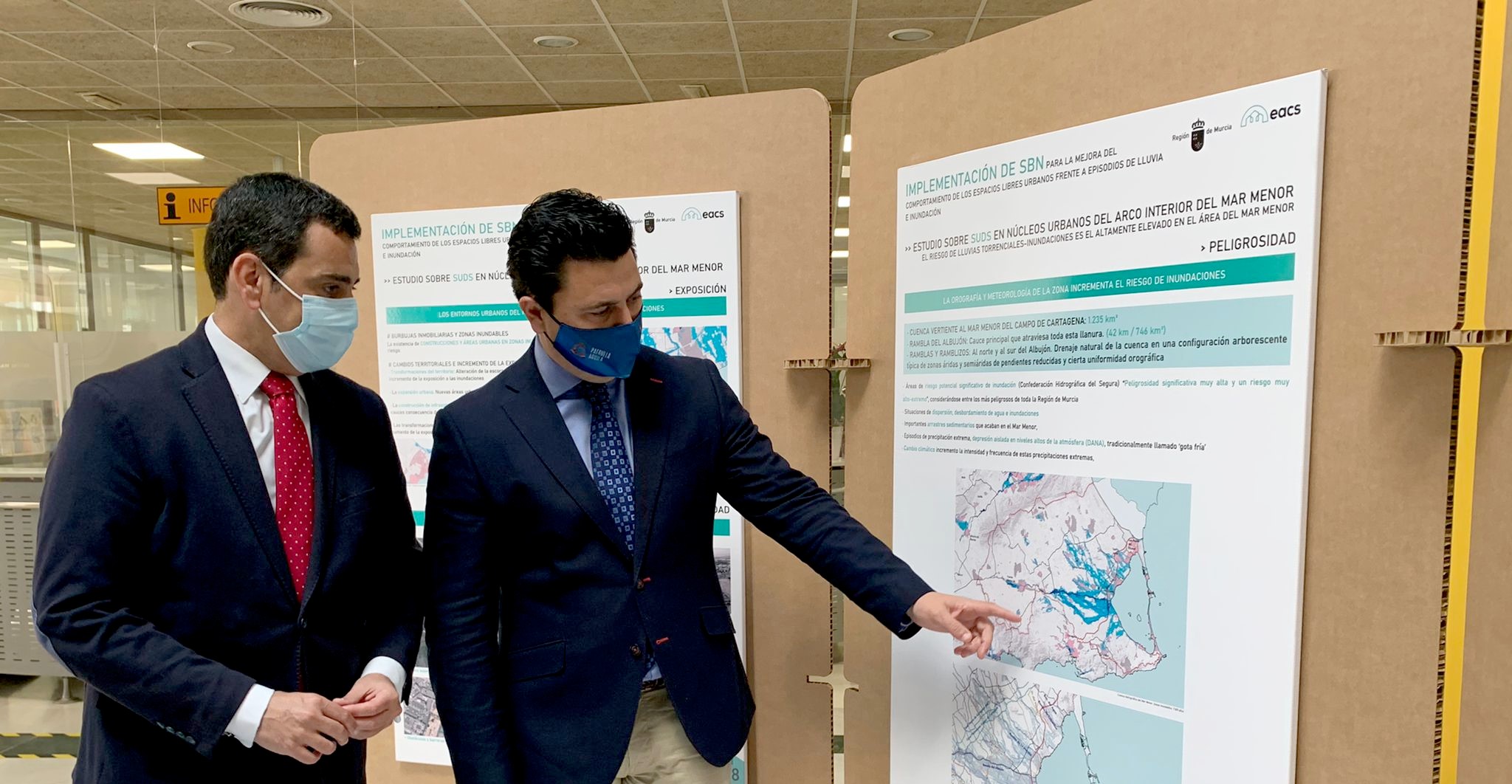The Autonomous Region establishes four ideal zones in San Javier to implement sustainable drainage systems to prevent floods
28/04/2021
Regional minister José Ramón Díez de Revenga and mayor José Miguel Lueng present the exhibition on green solutions to prevent the effects of climate change in the town
250 open spaces have been identified where Sustainable Urban Drainage Systems could be implemented
The Autonomous Region has established four ideal zones in the district of San Javier to implement Sustainable Urban Drainage Systems (SUDS) to help combat flooding in the town. These are the areas situated in Barranco del Agua and Ramblas de Cobatillas, Pozo Aledo and Roda, which have optimal conditions for implementing these green solutions.
The selection of these zones was one of the conclusions of the investigative study on SUDS conducted by the Polytechnic University of Cartagena, commissioned by the regional administration, which is part of the Sustainable Architecture and Construction Strategy (EACS).
SUDS will make it possible to collect, transport, retain, infiltrate and drain rainwater sustainably. They are novel solutions that complement the traditional water channelling systems and help to curb the effects of climate change and reduce the risks posed by torrential downpours.
The Regional Minister for Development and Infrastructures, José Ramón Díez de Revenga, and the mayor of San Javier, José Miguel Luengo, today opened the exhibition that summarises the study and which responds to the priority objective of flood prevention set by the regional executive after the DANA storm of 2019 to offer security to the population of the Region of Murcia.
"At the Regional Government, we are looking at solutions to the flood risks in the Region of Murcia, through measures that work with nature rather than against it, by implementing nature-based solutions," explained Díez de Revenga.
The minister stated that these types of measures aim to "slow the phenomenon of flooding from the first raindrop, instead of trying to direct the flows when they have already formed, what we are doing is trying to prevent floods from occurring and damaging infrastructures.
"The concept we are using is 'sponge cities', trying to ensure that water is retained in the same place as it falls, rather than running off," said Díez de Revenga. And he added that they aim to avoid sealing the ground in an impermeable way, and to replace areas of traditional paving with filtering materials.
Multiplier effect
The minister specified that the "greatest potential" of the areas of Barranco del Agua, Ramblas de Cobatillas, Pozo Aledo and Roda is that they could relieve the runoff load received in critical areas of the municipality, reducing the water levels they are subjected to.
"These spaces have a large capacity for accumulation and infiltration of water, and their layout, which is like a chain, establishes a synergistic and multiplier effect on the efficiency of the SUDS by layering the runoff through the urban area”, explained Díez de Revenga.
As well as setting these four urban action areas, the study identified 250 open spaces in San Javier made up of green areas, equipment, roundabouts and car parks, as well as 126 streets where it is possible to implement sustainable drainage systems.
Díez de Revenga stated that San Javier is already implementing these types of solutions "and is becoming a leading municipality in the implementation of new and innovative solutions to combat flooding".
The SUDS aimed at controlling the water are living roofs and gutters, permeable paving, and holding and infiltration tanks, while the measures responsible for filtering and treating runoff are floodable flower beds and bioretention areas. To improve water infiltration, it is recommended to install ditches or tree pits.
Statements: Regional minister for Development and Infrastructures, José Ramón Díez de Revenga, on the conclusions of the study on the implementation of sustainable urban drainage systems (SUDS) in urban environments in the municipality of San Javier
(MP3 file 1 793KB) (MP3 file 1 970KB) (MP3 file 1 1.16MB)

Photograph: Regional minister for Development and Infrastructures, José Ramón Díez de Revenga, and Mayor of San Javier, José Miguel Leungo, during the opening of the exhibition on the conclusions of the study into the implementation of sustainable urban drainage systems (SUDS) in urban environments in the municipality
